
| Parasitism is a form of symbiosis in which one partner benefits from the other, while the other is negatively affected. We call the negatively affected organism the host, and the benefitting species the parasite. Below are a few examples from fungi that parasitize on lichens; such fungi are called lichenicolous fungi. |
| Allantoparmelia alpicola |
| English | : | Rock grubs |
| Deutsch | : | Alpen-Braunschüsselflechte |
| Norsk | : | fjelltopplav |
| Svenska | : | fjällblåslav |
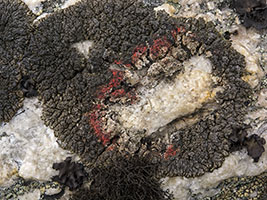 |
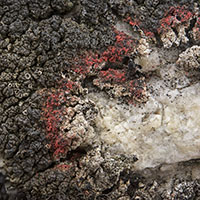 |
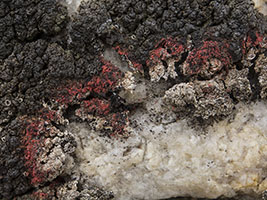 |
| Veggli (Buskerud), Norway; 1 August 2016. Unknown parasite on Allantoparmelia alpicola. | ||
| Arthonia varians & Lecanora rupicola |
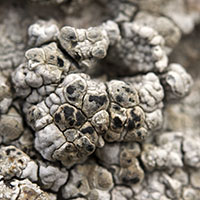 |
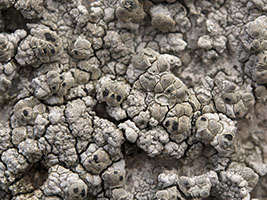 |
| Bjärby (Öland), Sweden; 14 June 2016. Arthonia varians parasitizes the apothecia of the host, Lecanora rupicola. |
|
| Arthrorhaphis grisea & Baeomyces rufus |
| Svenska | : | grå citrinellav |
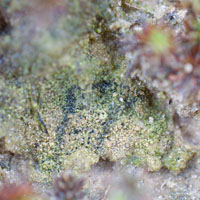 |
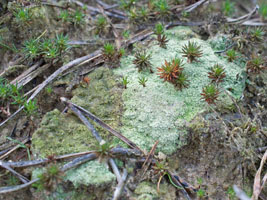 |
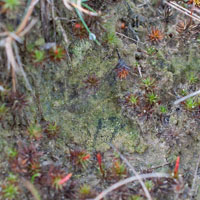 |
| Aekingerzand, the Netherlands; 30 November 2013. Baeomyces rufus is the host, Arthrorhaphis grisea the parasite. |
||
| Athallia nesodes |
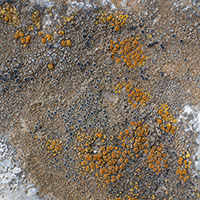 |
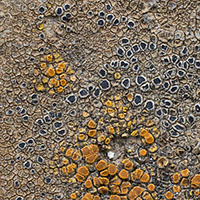 |
| Bjärby (Öland), Sweden; 27 April 2015. Athallia nesodes parasitically growing on an unidentified species. |
|
| Diploschistes muscorum & Cladonia spec. |
| Nederlands | : | Duindaalder |
| English | : | Moss lichen |
| Deutsch | : | Moos-Krugflechte |
| Svenska | : | mossgroplav |
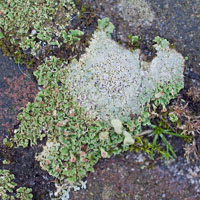 |
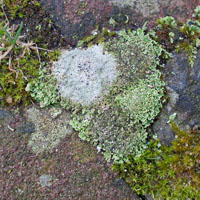 |
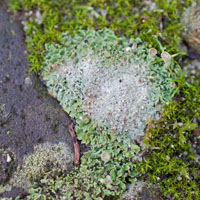 |
| Baarn, the Netherlands; 25 January 2015. Diploschistes muscorum growing parasitically on Cladonia spec. After the host dies, the parasite functions as an independently growing lichen. |
||
|
Sagediopsis spec. & Pertusaria hemispherica |
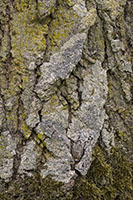 |
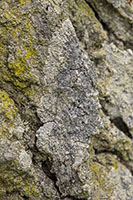 |
| Rälla (Öland), Sweden; 15 June 2016. Sagediopsis spec. growing parasitically on Pertusaria hemispherica. |
|
| Pseudephebe pubescens |
| English | : | Fine rockwool |
| Deutsch | : | Gewöhnliche Fadenflechte |
| Norsk | : | vanlig steinskjegg |
| Svenska | : | stentagel |
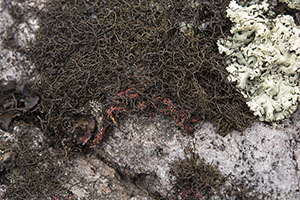 |
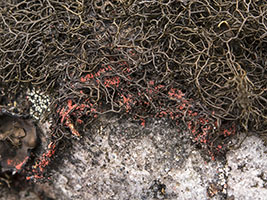 |
| Veggli (Buskerud), Norway; 3 August 2016. Unknown parasite on Pseudephebe pubescens. |
|
| Rimularia insularis & Lecanora rupicola |
| Deutsch | : | Parasitische Ritzenflechte |
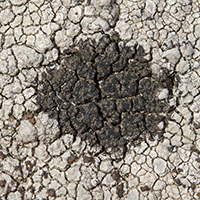 |
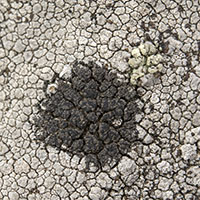 |
| Möckelmossen (Öland), Sweden; 12 June 2016. Rimularia insularis growing parasitically on Lecanora rupicola. |
|